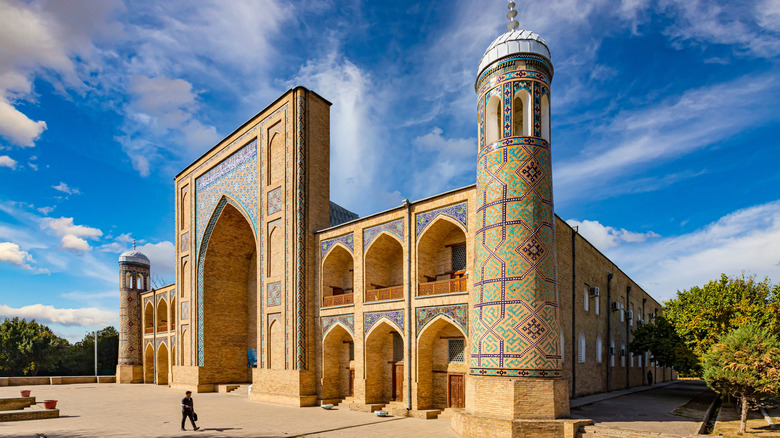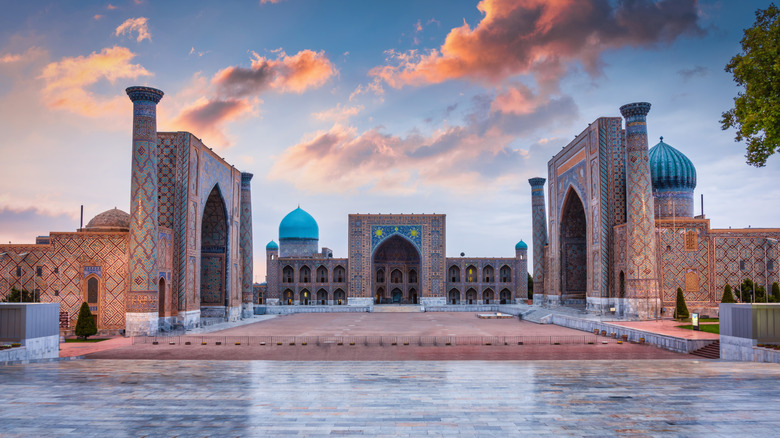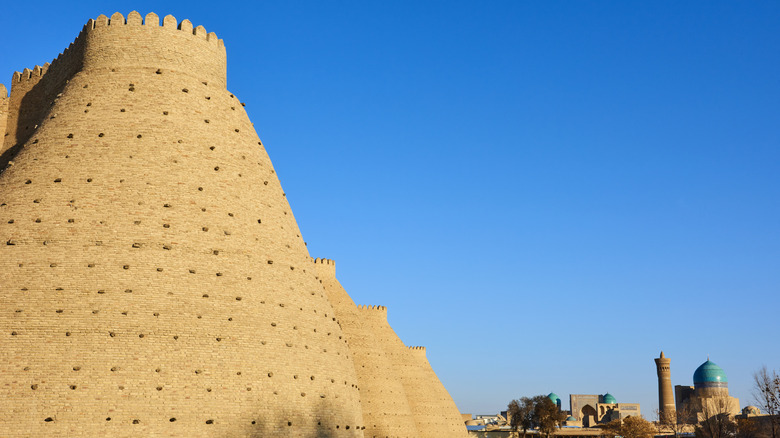The Breathtaking Central Asian Country Whose Glorious Architecture Rivals Renaissance Italy
The first place that might come to mind when thinking about Renaissance architecture is Tuscany and its gorgeous villages, like Pienza. Another favorite for 15th- and 16th-century architecture, according to Rick Steves, is the idyllic cultural capital of Florence. However, Uzbekistan, a landlocked country in Central Asia, also boasts some of the most stunning historical architecture in the world. Uzbekistan borders the under-the-radar thrill-seeker paradise of Kyrgyzstan to the east, Afghanistan to the south, and Kazakhstan to the north. Merchants traversed the Great Silk Road through Uzbekistan, which has a fascinating mosaic of cultures — Islam entered the region in the eighth century, and conquerors, including Alexander the Great, Genghis Khan, and Amir Timur, all left their mark in the area.
Tashkent is the metropolitan capital and the best starting point for exploring the country. After visiting the famed historical site of Kukeldash Madrasah and riding on the subway system, which has beautiful metro stations featuring vibrant Art Deco-style designs, check out the other old Silk Road cities: Samarkand, Shahrisabz, and Bukhara. Book a spot on the Afrosiyob Train, the high-speed rail, at least one week ahead of time. Also, the top B&Bs fill up quickly during the peak seasons in spring and summer, so plan accordingly. If possible, book airport transport with your accommodation, as it's not uncommon for drivers to overcharge tourists. Also, English is not widely spoken, so learning simple phrases in Uzbek or Russian is helpful. If you want to rely on Google Translate, purchase a SIM card from Beeline or Ucell.
The amazing architecture of Uzbekistan
Islam plays a significant role in the architectural aesthetics of Uzbekistan. Peshtak, or portals, are rectangular entrances with lancet arches used in medieval structures like mosques, madrasahs (Islamic educational institutions), and mausoleums. Domes are common elements, as they symbolize the sky above the earth. Minarets are tall towers attached to mosques where the muezzin, an Islamic cleric, calls for prayers five times a day. Since Islam forbids depicting humans and animals, craftsmen rely on geometric harmonization to express the worldview of Islam. The repeating use of the numbers four and eight in intricate patterns of girih (geometric knots) and islimi (plantlike pattern) create dazzling effects.
Samarkand, 190 miles from the capital, has some of the most fantastical sites. Registan, located in the heart of the old city, was the public square during King Timur's reign in the 14th century. Three unique grand madrasahs surround the square, their peshtak facing the center. Each is more elaborate than the next, with beautifully carved minarets, impeccable tilework, and magnificent domes. In 1409, ruler, mathematician, and astronomer, Ulugh Beg, built the first madrasah, now known as the Ulugh Beg Madrasah, on the west side of the square. It's a gorgeous building where students learned philosophy, astronomy, mathematics, and theology. Other notable structures in the area are Gur-e-Amir, the final resting place of King Timur, with ornate azure tilework. Shah-i Zinda, the "Tomb of the Living King," is a 14th-century mausoleum and a World Heritage Site. It's also the site of the seventh-century grave of Qusam, the prophet Mohammed's cousin.
More architectural wonders in Shahrisabz and Bukhara
Located about 54 miles from Samarkand is Shahrisabz, the 2,000-year-old "city of green" and the birthplace of King Timur. Ak-Saray Palace, unlike some of its contemporaries built by Amir Timur, isn't the usual flashy blue, green, and gold structure, but white. Some facades, however, are covered in elaborate mosaic work in traditional Islamic colors. Legends state that the original craftsman responsible for the mosaic disappeared halfway through the project, thus leaving the palace unfinished. Dorut Tilovat, or "the house of meditation," is where the impressive Kok Gumbaz Mosque stands. It's famous for its colossal peshtak and vibrant azure dome. Khast-Imam Square is the city's spiritual center, with more picturesque mosques, madrasas, and museums.
Bukhara is about 164 miles from Shahrisabz, and its historic center is an ancient Persian city and UNESCO World Heritage site. The quirky Chor Minor, built in 1807 with four minarets and turquoise domes, and the Kaylan Minaret, constructed in 1127 with a rotunda on the top and 16 arched windows, are the two prominent buildings in the city. The Samani Mausoleum is a cube-shaped structure built in the late ninth or early 10th century, making it a rare example of funerary architecture in Central Asia. Its detailed brickwork is a reminder of a lost but not forgotten kingdom. The Ark of Bukhara is an awe-inspiring citadel fortress where the royal family of the Mangit dynasty, rulers of Bukhara, resided for many years. The Ark complex is Bukhara's oldest structure, with its mud-brick exterior wall standing as a testament to the power and craftmanship of the dynasty.


